Gender
Ada Leonard and Her All-Girl Orchestra
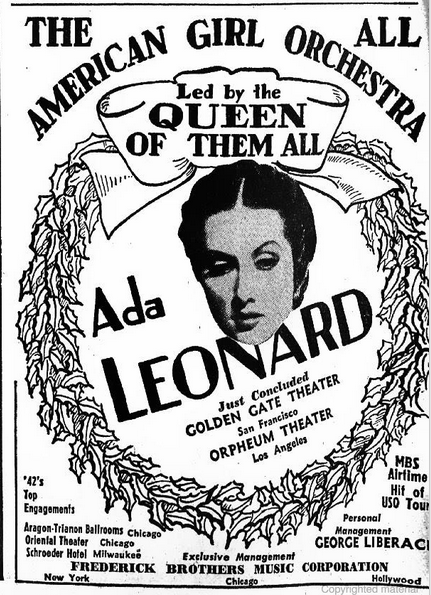
Wikipedia page here.
Posted By: Paul - Sat Aug 05, 2017 -
Comments (4)
Category: Music, Gender, Women, 1940s
Beer For Her
A Czech brewer has introduced Aurosa, a "beer for her":How exactly does one transform a beer into a "beer for her"? Apparently you put it into a pink-hued bottle and charge more for it.

This isn't the first attempt to make a beer specifically for women. Back in 2011, there was Chick Beer.
More info: eater.com.
Posted By: Alex - Sun Jul 23, 2017 -
Comments (6)
Category: Gender, Women, Alcohol
Battleship - the gender role edition
Milton Bradley debuted the board game Battleship in 1967, and the illustration on the box of that first edition has become somewhat notorious because it shows a father and son playing the game while the mother and daughter in the background do the dishes.That choice of scene wasn't any kind of accident. The game was deliberately marketed as a "father and son game." The phrase was constantly repeated in early advertisements for the game. The whole idea of "father and son games" has now, of course, disappeared from board games.
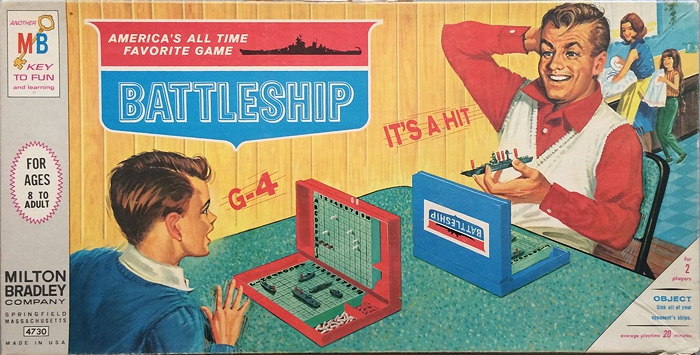
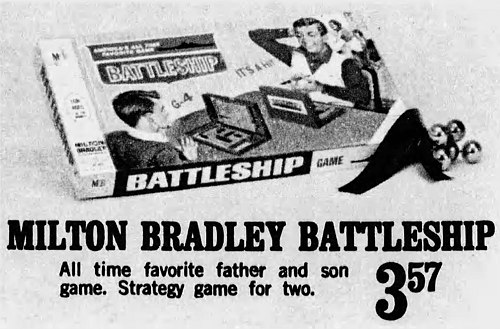
The Akron Beacon Journal - Nov 30, 1969
Posted By: Alex - Sun Jun 25, 2017 -
Comments (5)
Category: Games, Gender, 1960s
A license to kill
Maybe they were hoping to appeal to the serial killer demographic.The ad ran in Playboy magazine, 1964.
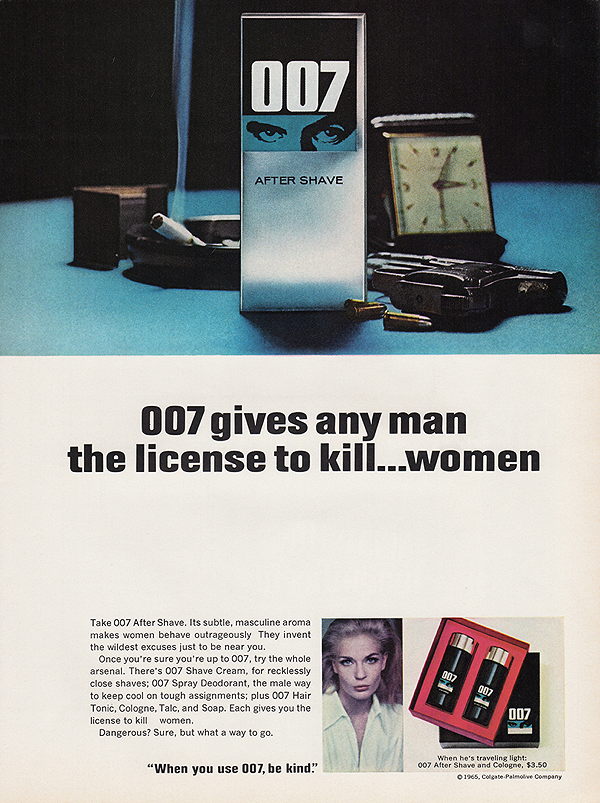
The after shave is briefly mentioned in Playboy and the Making of the Good Life in Modern America, by Elizabeth Fraterrigo:
Posted By: Alex - Sat May 20, 2017 -
Comments (2)
Category: Advertising, Gender, 1960s
Only man never to have seen a woman
October 1938: 82-year-old Mihailo Tolotos died. He had lived his entire life in Greece's Mt. Athos monastery, which women were (are) not allowed to enter, and he was therefore believed to have been the only man in the world never to have seen a woman — or rather, the only man never to have been in the presence of a woman (except his mother, who died giving birth to him), because as the folks over at The Straight Dope point out, anyone who is born blind will have never seen a woman.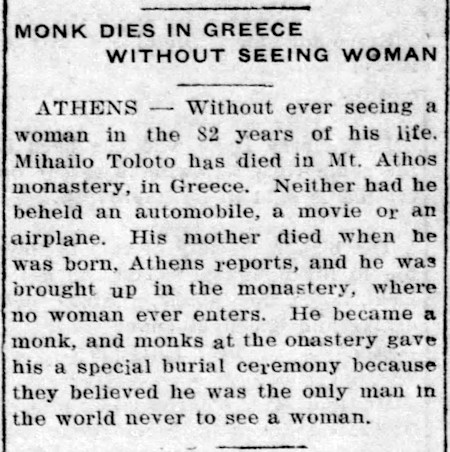
The Edinburg Daily Courier - Oct 29, 1938
In 1949, the Nixon Furniture Company featured the story of Mihailo Tolotos in one of their ads. They were worried that just as Tolotos had never seen a woman, perhaps the readers of the Raleigh Register hadn't seen all of Nixon's new furniture.

The Raleigh Register - Jan 7, 1949
Posted By: Alex - Wed Apr 20, 2016 -
Comments (7)
Category: Gender, Men, Women, 1930s
The New Science of Same-Gender Attraction
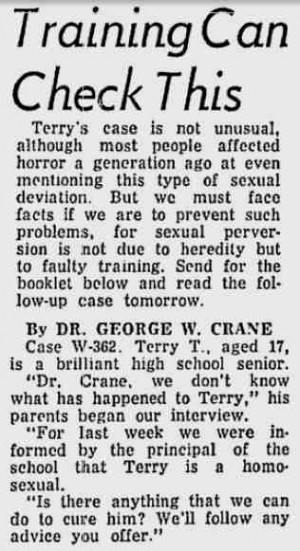
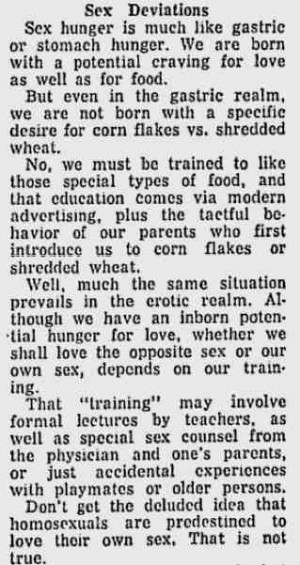
[Read left to right columns above, then left to right below]
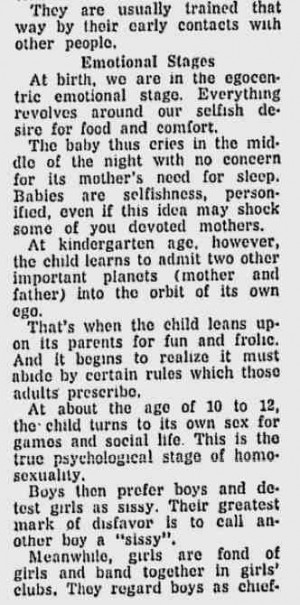
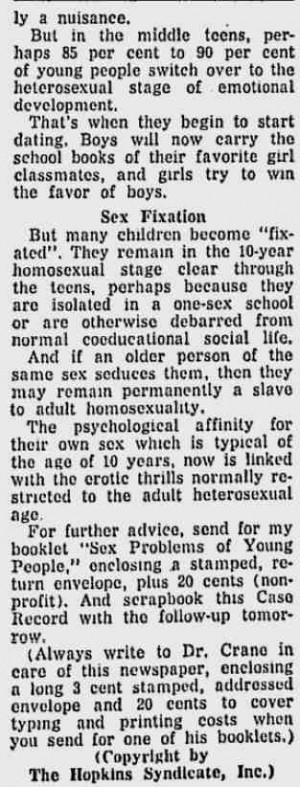
"New," that is, for 1957.
Posted By: Paul - Wed Oct 31, 2012 -
Comments (8)
Category: Sexuality, Gender, Teenagers, 1950s
Gender-Differentiated Toy Film Projectors
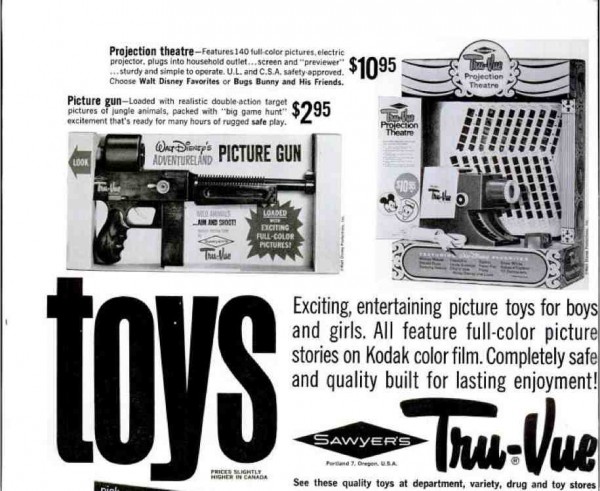
Guess which model is for boys, and which for girls....
Original ad here.
Posted By: Paul - Sat Aug 25, 2012 -
Comments (9)
Category: Movies, Toys, Gender, 1960s
Science as a girl thing
EU bureaucrats, in their great wisdom, decided that the way to encourage teenage girls to pursue a career in science was not by appealing to their intelligence and curiosity, but rather by flashing images of high heels, lipstick, and makeup at them, along with the tagline: "Science, It's a Girl Thing." The inevitable outrage followed. (telegraph.co.uk)It was my impression (though I don't have any data at hand to back it up, so I could be totally mistaken) that in some sciences, such as biology and medicine, women are fairly equally represented (perhaps even at risk of becoming over-represented). So in those cases science already is a "girl thing." It's the physical sciences, such as electrical engineering, that still have trouble attracting women.
Posted By: Alex - Fri Jun 29, 2012 -
Comments (5)
Category: Science, Gender
The Astounding She Monster
If you like the trailer above, watch the whole film below!
Watch The Astounding She Monster [1958] in Entertainment | View More Free Videos Online at Veoh.com
Posted By: Paul - Sat Apr 28, 2012 -
Comments (3)
Category: Aliens, Movies, Sexuality, Gender, Women, 1950s, Fictional Monsters
Boys Will Be Boys
The Washington School for Boys Drama Club, circa 1910. (via Shorpy)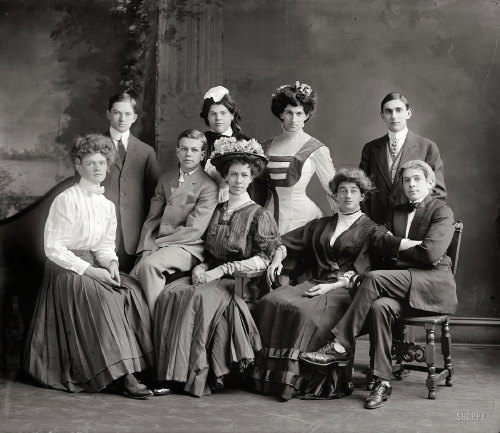
Posted By: Alex - Tue Apr 21, 2009 -
Comments (2)
Category: Photography and Photographers, Gender, 1910s

| Who We Are |
|---|
| Alex Boese Alex is the creator and curator of the Museum of Hoaxes. He's also the author of various weird, non-fiction, science-themed books such as Elephants on Acid and Psychedelic Apes. Paul Di Filippo Paul has been paid to put weird ideas into fictional form for over thirty years, in his career as a noted science fiction writer. He has recently begun blogging on many curious topics with three fellow writers at The Inferior 4+1. Contact Us |




